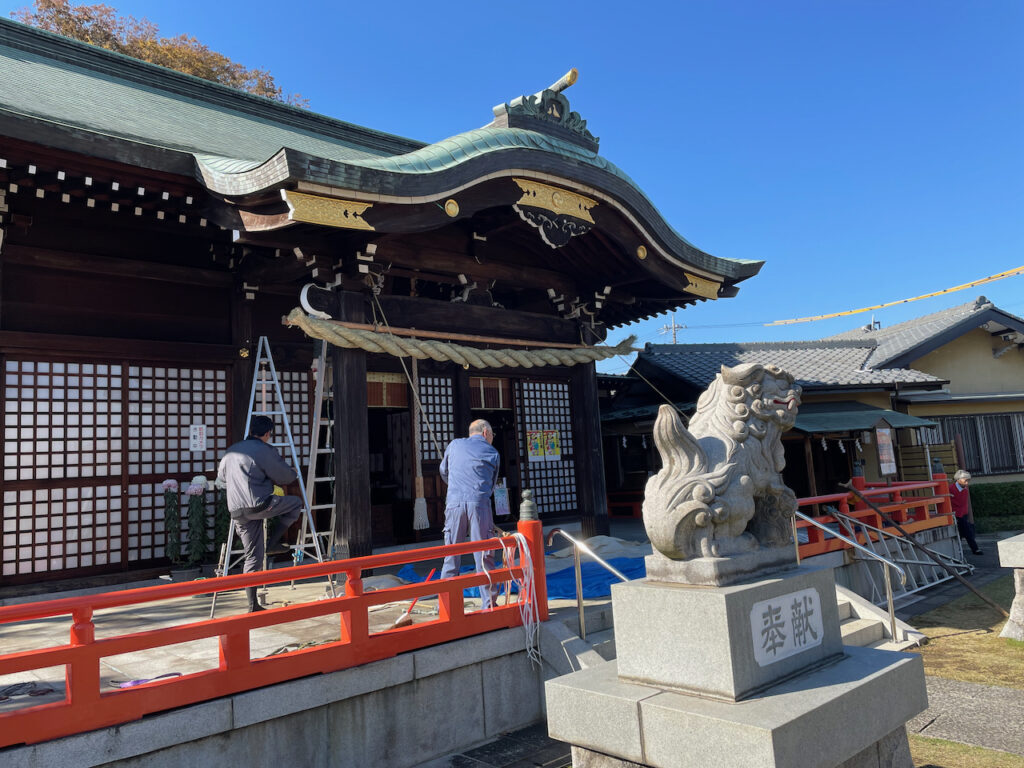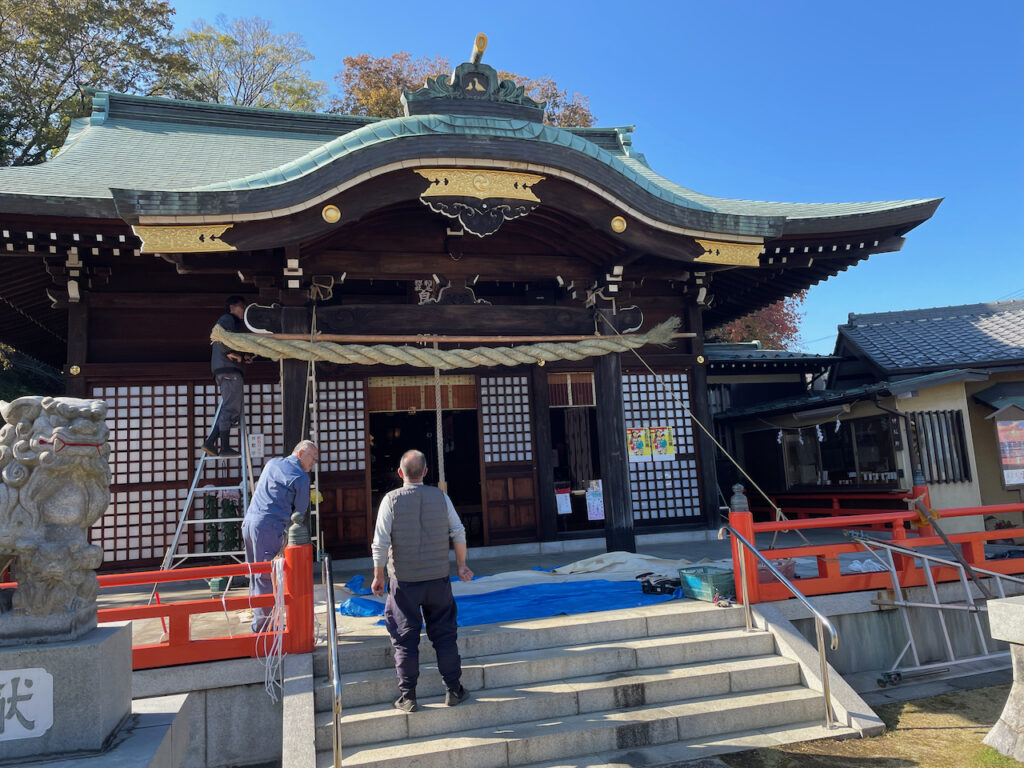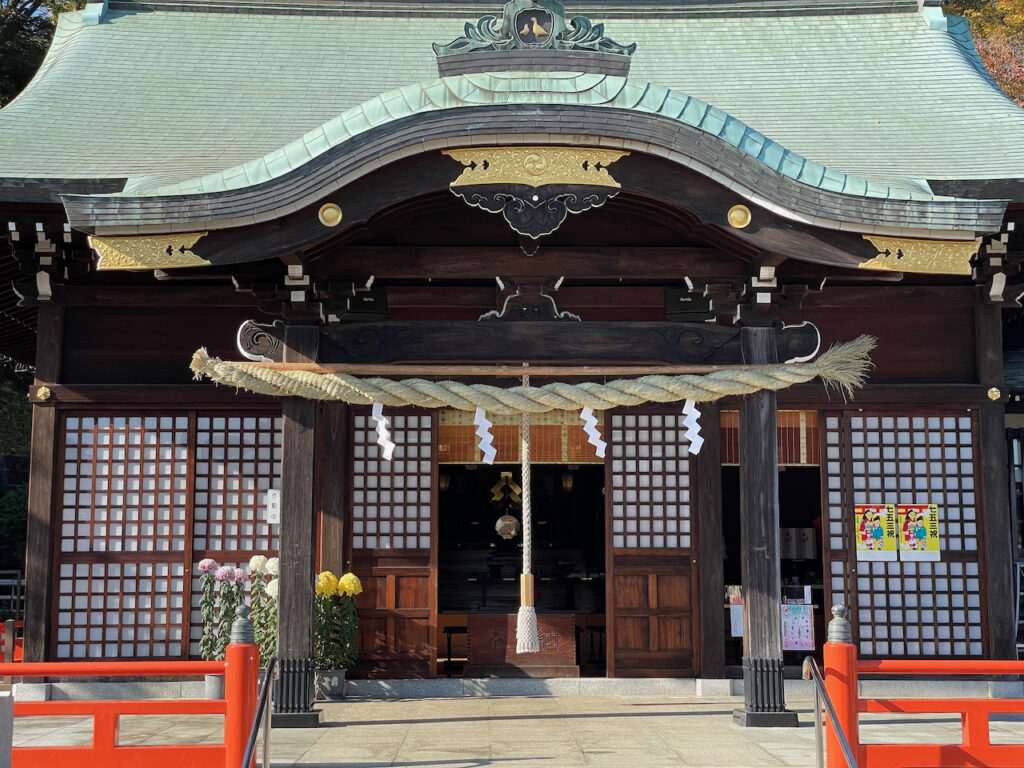My local jinja, Shirahata Hachiman Daijin, has just hung a new shimënawa at the entrance to the prayer hall. I chatted with the priests about it, and learned that this is only the fourth one in the fifty years since the sanctuaries were rebuilt.



This shimënawa is made of rice straw, so it is the “real thing”, but it seems that those are not easy to get. The company that made the last one is no longer in business, and it seems it was not straightforward to find another one. Either this one or the last one was from a company in Kyūshū, in southwestern Japan. (We were chatting. I didn’t take notes.)
Some of the other shimënawa in the precincts are made of plastic. They are fairly convincing — you might not notice if you only visited once. However, after multiple visits, it does become obvious. I got the distinct impression from the conversation that this was a matter of availability rather than cost or convenience. Larger jinja can get straw ropes because they can put large orders in months in advance, but it seems that there are simply not enough suppliers for all the jinja.
Historically, of course, the ujiko made their own shimënawa from their own rice straw, and that still happens in some rural jinja. There, it is sometimes a major event, where the techniques are passed down. However, most urban jinja do not have access to the straw, or people with the skills, and rural jinja that have the straw probably lack the craft skills in most cases.
This sort of problem is common. Things that were a standard part of historical life were incorporated into Shinto practice, and now there are very few people who can still create them. This is part of the changes that are inevitable over time, of course, but I would still like to see many of these practices preserved for as long as possible.
May I ask what the skills are that are necessary to make a “shimënawa” that would be part of everyday rural life ? Which is to say other than the skills necessary to make a shimënawa, I assume that that there are some rural skills necessary that are not exclusive to the making of the shimënawa, such as basket making, rope making, mat making etc.
You may ask. Unfortunately, I don’t know the answer. I would guess ropes and mats, but that is just a guess.
Thanks for the reply. To follow up – is there a noticeable difference between the the commercially made examples and the “home made ” ones.
I haven’t seen enough examples of both close-up to be able to give a good answer. This is complicated by the existence of regional customs, which means that some differences might have nothing to do with commercial manufacture. (There are different shapes of shimënawa — fat ones and thin ones, to oversimplify massively — but I believe that difference is independent of the source.)
This video shows and example of how one jinja’s ujiko got together to harvest the straw locally and make a new large shimenawa (I think this one is 5 meters long). I would assume that a few of the locals have a good knowledge of how to do this.
https://www.youtube.com/watch?v=sCrfUVjVIJE
Yes, if the jinja has ujiko who can do it, this is certainly the way to go.